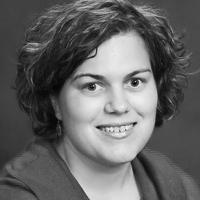Question
What are the three types of wound healing?
Answer
Primary Intention Healing
Primary intention healing is when a person has a suture, or perhaps a laceration, and the wound is closed by sutures, staples, et cetera. The wound doesn't have to granulate or fill in by granulation tissue and it doesn't have to re-epithelialize. The wound edges are pulled together and closed by the sutures or staples. Rarely do wound care specialists have to deal with this type of wound unless for whatever reason it opens up.
Tertiary Intention Healing
Tertiary, or delayed primary healing is when a surgeon will leave the wound open to granulate prior to closing it with sutures or staples. A lot of times we see this tertiary intention when there's an infection expected or suspected, or if there's a traumatic injury such as a person riding a motorcycle who slid and has some road rash and deeper lacerations as well. There's some fear that there may be some gravel or some debris in the wound, so the doctor will leave that wound open to granulate and heal a little bit before they close it primarily.
Secondary Intention Healing
Secondary intention healing is also called full thickness healing. These are the wounds that have to heal by granulation and re-epithelialization.
Full thickness, or secondary intention healing, is the most effective form of healing when a wound goes through all layers of skin and/or into the underlying tissues. If a doctor tries to prematurely close a wound (prior to full granulation process occurring) that has some significant depth to it, then the patient may become susceptible to an abscess. I like to use the analogy of gardening or planting trees. You can't just dig a hole, and then cover it over with grass, or cover it over with mulch, without allowing that hole to be filled in with dirt first. The same thing is applicable regarding a wound. The wound needs to be filled in with granulation tissue first before you can close it with epithelialization.
Full thickness wounds heal by formation of granulation tissue, and contraction of the wound edges. They will have scar tissue formation and the tissue will not be the same tissue that it was prior to the injury. It is important that patients' understand that their wounds, even though they appear healed once they're fully closed, that they're still only 80% as strong as the tissue that was present there before. The patients need to understand that they will always be prone to a future breakdown in that same area. So, when patients have pressure injuries and/or diabetic foot ulcers, it's important that they understand, that even though they go on to heal, they're going to be at risk for future re-ulceration because the tissue strength is not as durable as it was before.
